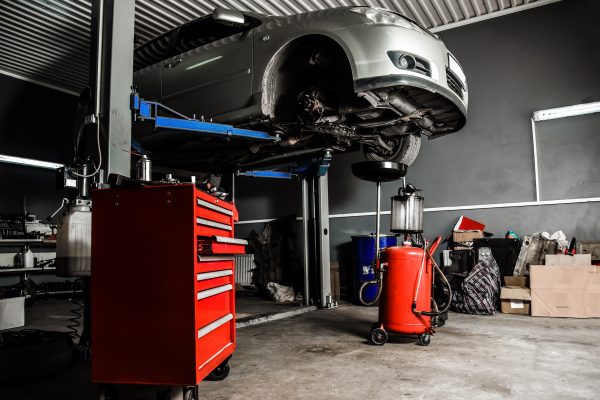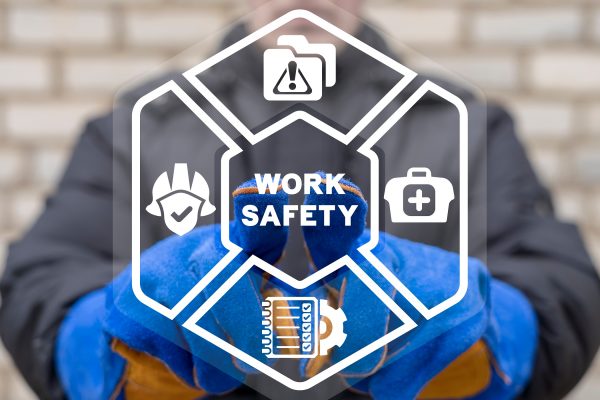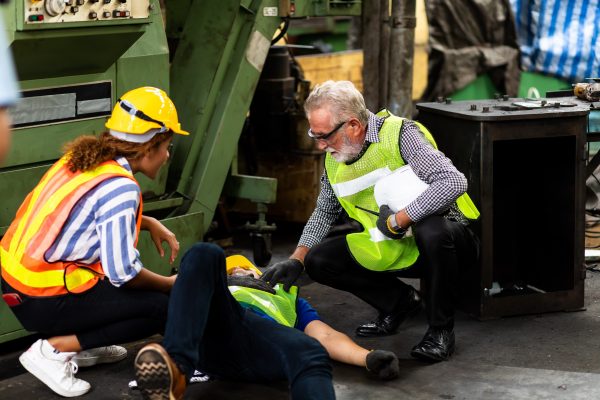Electricity and electric shock can kill. Most people do recognise this risk; but you would be stunned at some of the actions that some people have taken in the past; acts which have then led to electric shock and frequently; death at work. Sometimes it is not the electric shock itself which leads to injury (or worse) – for example persons have received an electric shock only to be then thrown from a ladder and then died of injuries associated with a fall from height.
Those who carry out electrical maintenance and repair; or servicing to electrical; machinery and equipment must have the necessary skills and knowledge to do the work safely; that is to say without undue risk themselves; and without risk to the safety of others.
Work on electrical equipment, machinery or installations should be:
• Thoroughly planned;
• Done by people who can demonstrate competence;
• done by applying suitable equipment and work standards.
Thorough Planning:
It is essential that equipment, machinery or installations are prepared for the work to be carried out. This includes the isolation and release of all sources of energy (electrical, mechanical, hydraulic, pneumatic, etc.) and may also involve additional work such as decontamination or the
construction of a safe working platform. Isolation of energy sources should be secure, meaning that energy cannot be inadvertently re-introduced into the equipment, machinery or installation. All work should be thoroughly planned so that it can be done safely and so that the completed
installation or equipment is safe. The HSE booklet Electricity at work, safe working practices provides information on how to plan electrical work in a wide range of industries. Other guidance from the HSE about electrical safety on construction sites provides information on how to plan electrical installations on construction sites.
Particular care should be taken when repairing equipment that is safety related such as equipment in a potentially explosive atmosphere, (for example in motor vehicle repair workshops) or which guards against contact with moving machinery (for example disabling interlocking guards and thereby putting the user of the machine at risk of injury from dangerous moving parts etc.). You shouldmake sure that the repair will not prevent the correct operation of the equipment or adversely affect its safety in any way.
Competence to do the Work;
People working on electrical equipment, machinery or installations must be competent to do so. This means those carrying out electrical work must have the necessary skills, knowledge and training and experience to carry out their work safely; and without putting at risk the safety of others.
The level of competence required to do a task is dependent upon the complexity of that task and the amount of knowledge required. You may need to ascertain the competence of any Contractor that you have engaged to carry out work on your behalf. Assessing the suitability of an individual
to do a task requires evidence of:
• Training to an appropriate level in the area of work
• Experience of achieving a suitable standard in similar work.
• Regular re-assessment.

Stocking only premium EV charging cables, we ensure you experience a stress-free EV charge, over and over, confidently backed by our 2 year warranty. Our premium & reliable charging cables are compliant with EU & UK safety standards. We offer free next day delivery* on all EV charging cables when shipped within mainland UK.
People who cannot demonstrate competence should NOT be allowed to work; unless they are adequately supervised by someone who is competent. The Memorandum of guidance on theElectricity at Work Regulations 1989 provides information on electrical competence.
Equipment and Work Standards
Equipment that is installed should be suitable for the task it will perform and the environment within which it will be expected to work. A wide range of electrical equipment and work is covered by recognised standards that offer guidance on good engineering practice. For example, BS 7671:2001 Requirements for electrical installations, IEE Wiring Regulations, Seventeenth Edition offers guidance on the requirements for the construction and testing of electrical installations. There is a list of some of the more common electrical standards on the website of the HSE. Most British and European standards can be purchased from British Standards Online
A European Directive, the Low Voltage Directive (2006/95/EC ), places duties on the design, manufacture and supply of electrical equipment within the voltage ranges 50 – 1000 volts’ ac or 75 – 1500 volts’ dc. This Directive is implemented in Great Britain by the Electrical Equipment (Safety)
Regulations 1994 . These require electrical equipment to be safe and to conform to certain essential safety requirements. Department for Business, Innovation and Skills (BIS) has responsibility for policy on these regulations. Enforcement is undertaken by HSE for equipment intended for use in the workplace, and Local Authority Trading Standards departments for equipment intended for use elsewhere.
Making Sure the Power is Off
If a person is not competent to check if the power is off, then they must ask a competent person to do it for them; and they should watch them doing it. If the person has any doubts about the method they have used, then they ask someone they know to be competent to confirm the system is safe When checking that power is off the competent person should be SURE that:
1. The device being used is suitable for the purpose of isolation.
2. The isolator being used to turn off the power is working correctly and reliably.
3. The switch being used is the only way that the circuit can be fed with electrical power.
4. The switch being used is locked in the off position and cannot easily be turned on again.
5. The equipment and method being used to check for voltage works and is reliable.
6. The isolation has been successful by confirming the circuit is no longer ‘live’.
Some electrical systems and equipment must be earthed before it is safe to work near them. Check whether this is necessary, and if it is, ensure that this is done properly.
Making Sure the Power Stays Off (Secure Isolation)
If the electrical power has been turned off to allow you to do work safely, it is essential that the power stays off until you have finished work. Make sure YOU are in control and STAY in control. A good way is to have the only key to the switch or a locked room or cabinet containing the switch. Remember, if you remove a fuse, another one could be inserted in its place, and people ignore notices. If you have any doubts that the electricity may be turned on again without you agreeing, STOP WORK.
Of course Managers should keep in mind that it is not only those who carry out electrical maintenance and repair who are at risk harm from plant, equipment and machinery.
Only trained and authorised users of work equipment should have access to and use of the said work equipment. One effective way of preventing any unauthorised start-up of any electrical work equipment is to fit a padlock to the isolating mechanism (as can be seen in the photograph) and to then ensure that there are suitable arrangements in place (i.e. controlled access to the padlock keys used to lock out the isolator mechanism) so as to ensure that ONLY a trained and authorised person can energise the isolated plant, equipment and machinery. Employers are required to provide to their employees “safe plant and safe systems of work” – measures such as this can contribute towards safe working practice.
The HSE publication HSR25 is intended to help dutyholders meet the requirements of the Electricity atWork Regulations 1989. It will be of interest and practical help to all dutyholders, particularly engineers (including those involved in the design, construction, operation or maintenance of electrical systems), technicians and their managers.
It sets out the Regulations and gives technical and legal guidance on them.







